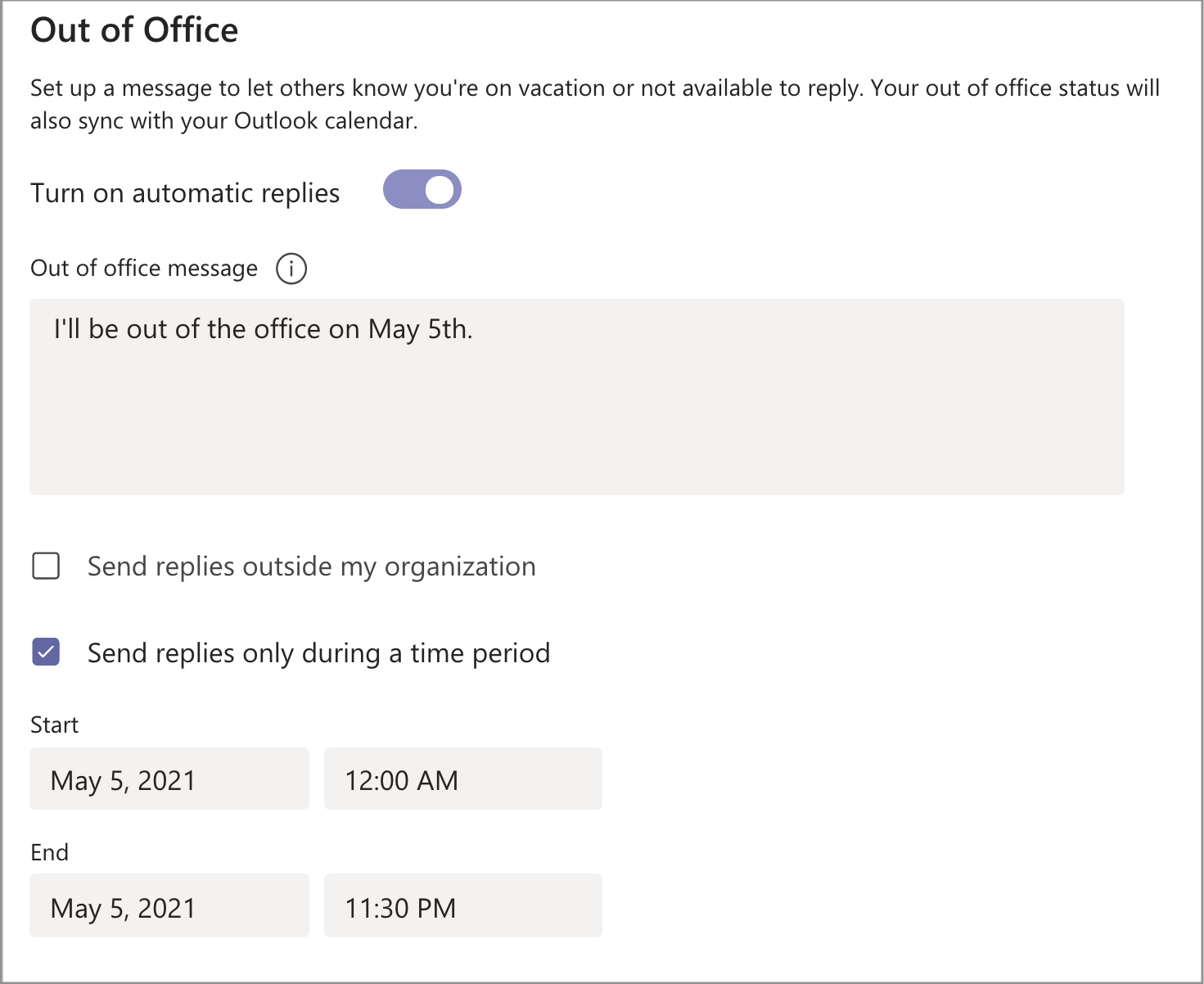Schedule an out of office status in Microsoft Teams
Set up an out of office status and message to let your teammates know you're not working or on vacation. When teammates send you a chat message, they'll see your out of office reply and know you're unavailable. Your out of office status will also sync with automatic replies in your Outlook calendar.
There are two ways to schedule your out of office status and message in Teams.
Schedule an out of office from your profile picture
-
Select your profile picture at the top of Teams and choose Set status message
-
Select Schedule out of office at the bottom of the options.
-
Turn on the toggle next to Turn on automatic replies.
-
Type an out of office message in the text box. This message will appear when people contact you in Teams or open your profile. It'll also be sent as an automatic reply in Outlook.
Note: An out of office message is required in order to set your status and sync with your Outlook calendar.
-
If you'd like to send an automatic message to people outside of your organization, select the check box next to Send replies outside my organization and choose between your contacts or all external senders. You can tailor your out of office message to this audience, or use the same message you typed above by copy/pasting it into the text box.
-
Based on when you'll be out of the office, choose the dates and times that your out of office message and status will start and stop displaying by selecting the check box next to Send replies only during a time period.
-
Select the Save button.
Schedule an out of office in settings
-
At the top right of Teams, click Settings and more
-
Select the Schedule button to open the out of office screen. Then follow steps 3 through 7 above to set your preferences.
To clear your out of office status and turn off your automatic reply in Teams, return to the Out of Office screen, click the toggle next to Turn on automatic replies and select the Save button.
Once you've scheduled an out of office status and message in Teams, you'll see automatic replies turned on in Outlook with the time range and message you set in Teams.
If you choose to update your out of office details in Outlook, your changes will be reflected in Teams. To learn how to turn on or off an Outlook out of office reply, see Send automatic out of office replies from Outlook.
You can easily turn on out of office replies while on the go with the Teams mobile app. Your updated auto-reply will be synced across all your other apps.
-
In the Teams app, open your profile card by tapping on your profile picture in the upper left corner of the screen.
-
Select your current status.
-
From the status menu, select Out of office.
-
Turn on the toggle next to Set auto reply, and compose your out of office status message, which will appear when people contact you in Teams or open your profile. It will also be sent as an automatic reply in Outlook.
-
Turn on the toggle next to Select your start and end dates and select the date and time range when you’ll be unavailable.
Note: You can also access out of office settings by selecting Set status message in your profile.
















